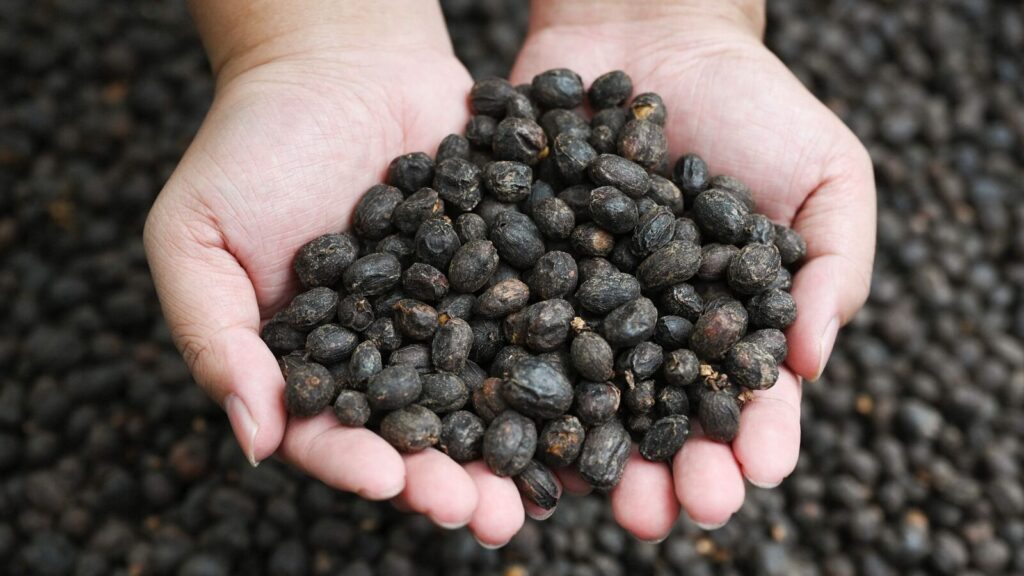In the two years since March 2023, an International Monetary Fund price index for beverages, comprising cocoa, coffee and tea, has risen 122%. By comparison, the IMF’s food price index has declined 12%. Cocoa and coffee have been the drivers of inflation in the beverages space, with key producer countries facing supply shortages, and there could be more price challenges.
Brazil and Vietnam account for over half of the global coffee production. Brazil has had irregular climate events—first a devastating frost and then a drought last year due to El Niño. The International Coffee Organisation has raised concerns about Brazil’s coffee season in 2025-26 as well due to frost. Vietnam also faced a drought due to El Niño last year.
It’s a similar picture for the main producers of cocoa: Ivory Coast and Ghana. West Africa accounts for 80% of the world’s cocoa production. Here too, climate change, coupled with plant diseases and a longer-term problem of ageing trees giving lower yields, has led to global shortages.
Tea production, too, has been hit by irregular weather. In India, tea production in 2024 fell 8% over 2023 levels.
India has not remained unaffected by the turmoil in global coffee and cocoa markets. Interestingly, while domestic wholesale prices in both commodities have risen, retail prices of coffee have soared while those of cocoa, or chocolate, have remained muted. However, this could also be a reflection of producers tweaking their recipes of chocolate to reduce the quantity of cocoa while keeping prices constant.
Coffee: Bitter brew
India is self-sufficient in coffee. Its total production is more than its domestic demand. It is also a net exporter, shipping out more coffee than it imports. Despite that, and in spite of domestic production being less plagued by unusual weather, coffee prices in India have risen sharply.
The bulk of the Indian coffee supply (production and imports) is exported. Only around 20% is used for domestic consumption. As a result, local prices have strongly tracked international prices.
“Coffee has been a complete super inflation,” Suresh Narayanan, chairman and managing director of Nestle India, said during a call with analysts in February. Admitting that volumes in both coffee and cocoa had been dented because of the price increases, he added, “If the situation does not improve, then the whole dynamics of the market will change.”
Cocoa: Farmers’ dilemma
India imports a big part of its domestic cocoa requirement. For 2024-25, the government had forecast cocoa production at 30,000 tonnes, the same level as in 2023-24. Meanwhile, between April 2024 and January 2025, India imported 111,050 tonnes of cocoa and exported 37,155 tonnes.
But unlike with coffee, the rise in retail cocoa prices has been slower than wholesale prices, as price hikes beyond a point will hurt volumes.
In cocoa, globally, an indicator of demand is the ratio between stocks of cocoa and so-called ‘grindings’ (the process whereby cocoa is turned into end products). The lower this ratio, the less the extent to which current demand can be met out of existing stocks. In 2023-24, this ratio hit a 46-year low of 27%.
While climate change affects all agricultural commodities, cocoa is cultivated largely by small farmers, who receive a small proportion of the price of the final product. As a result, they have not been able to invest in new plants. And as their existing trees age, yields will decline.
Tea: Climate effects
Of the three beverages, tea is the one driven most by dynamics internal to the Indian market. Here too, tea production in 2024 fell as compared with 2023. Assam, which accounts for over half of the tea production in the country, alternately experienced heatwaves and floods during last year’s harvest season. As a result, tea production in the state in 2024 fell 6% from the year before. Production in West Bengal, which accounts for another 30% of Indian tea production, fell by 16% from a year earlier. As a result, tea auction prices rose by 18% in 2024.
All three commodities face an uncertain future, with the key driver being climate change. Thus, while year-to-year fluctuations may moderate prices in the short term, it’s likely that all these beverages are only likely to become much more expensive in the longer term.
www.howindialives.com is a database and search engine for public data
Source:https://www.livemint.com/industry/climate-change-coffee-tea-cocoa-prices-inflation-lower-crop-production-exports-retail-prices-raw-material-expenses-11746341824991.html

